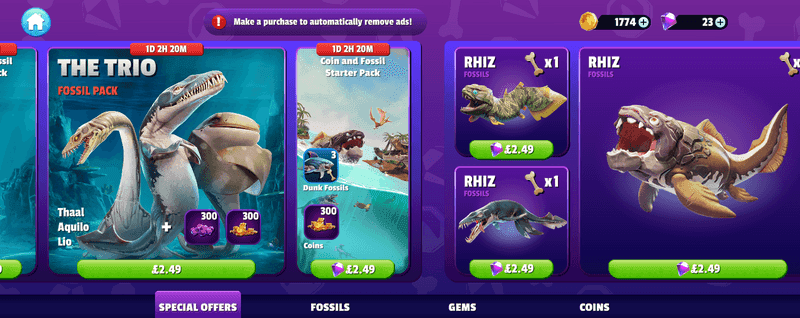Design Principles
Learning from our legacy game (Hungry Shark World) and performing competitive benchmarking against mobile games, I established 6 design principles for our approach with Hungry Shark Primal's Shop.
See Hungry Shark World's Shop case study to see how my design strategy has evolved.
Core Design Principles
Every offer must immediately communicate its value to the player
Information revealed at the right moment to avoid overwhelming players
Offers tailored to player progress and behavior patterns
Clear pricing and no hidden mechanics to build trust
Personalized deals based on player segments and preferences
Built for rapid iteration and seasonal content updates
Modular Shop Architecture
Interchangeable Block Units
I designed a standardized sizing system for Live Operations offers, using predefined grids. This framework helps artists and Live Operations teams efficiently create enticing bundles and combo offers. It simplifies the promo offer bundle creation process, ensures visual coherence, enhances user experience, and allows for more flexible monetization strategies.
The shop is designed to scroll horizontally with navigation shortcuts in the bottom that lets the player snap to whichever subcategory they want. It is built to be live-ops friendly and modular, with block arrays easily substituted by game economists and live ops managers.
Visual Grid System Layout
Interactive representation of the CSS Grid fractional units system (3fr, 2fr, 1fr, 1fr) used for flexible content blocks in the shop architecture.
Premium Offers
High-value bundles and exclusive deals that require maximum visual impact
Featured Content
Standard Offers
Regular promotions and currency packs
Core Sales
Quick Deal
Fast purchases
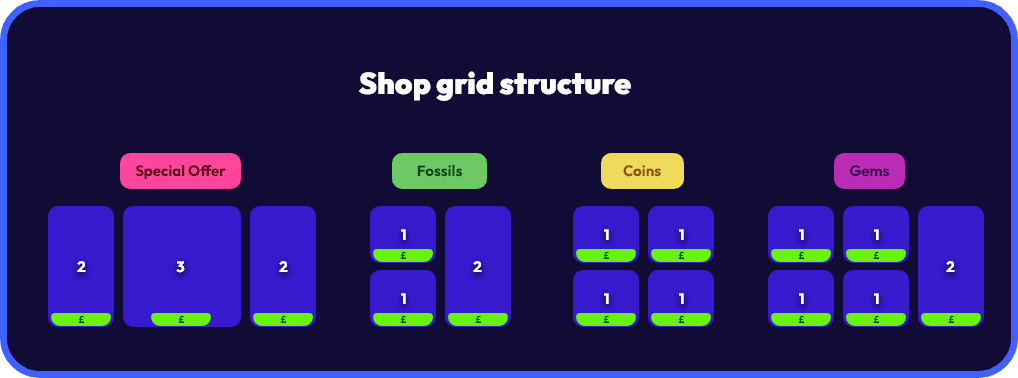
Modular architecture block system showing different grid sizes
Creating a System for Custom IAP Offers
Exclusive Time Limited Special Offers
The shop scrolls horizontally with navigation shortcuts at the bottom, letting players snap directly to desired subcategories. Built with a modular block system, it allows game economists and live ops managers to seamlessly substitute content arrays for rapid iteration.
Dynamic Offer System
Special promotions deliver personalized value through contextually-targeted offers, empowering live ops managers to craft deals tailored to individual player behavior and progression.
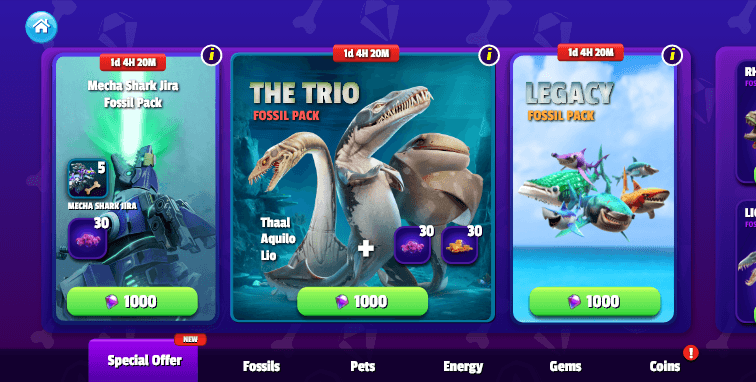
Main shop interface showing horizontal scrolling and navigation
Dynamic Offer System Features
Offers tailored to specific player segments
Offers generated based on current player state
Framework for testing offer effectiveness
Event-based promotions and special offers
Evolution of the Shop Designs
Design Evolution
The interface evolved from structural wireframes prioritizing navigation clarity to an immersive, themed experience. I maintained the core horizontal scrolling and modular architecture while layering rich underwater environments, dynamic promotional content, and sophisticated visual storytelling that reinforces the game's aquatic theme.
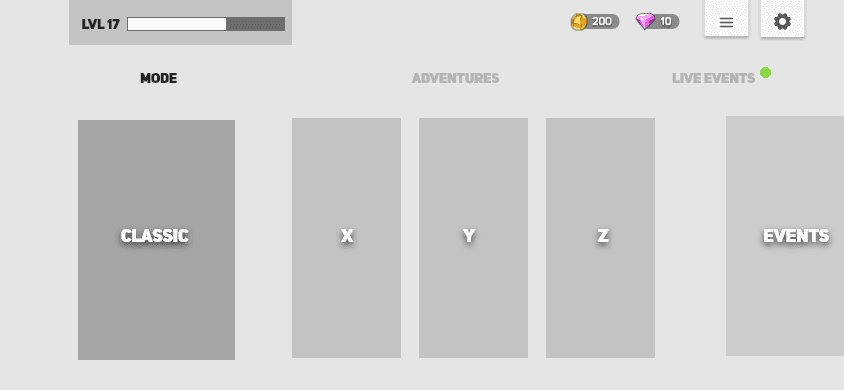
Shop wireframe design - Foundation phase
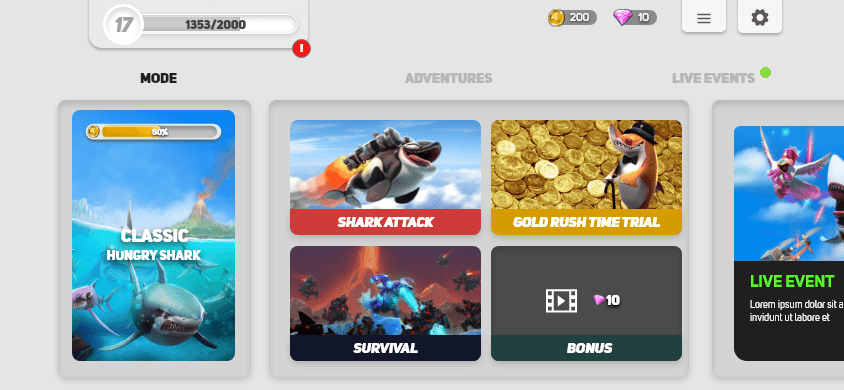
Shop mid-fidelity design - Refinement phase
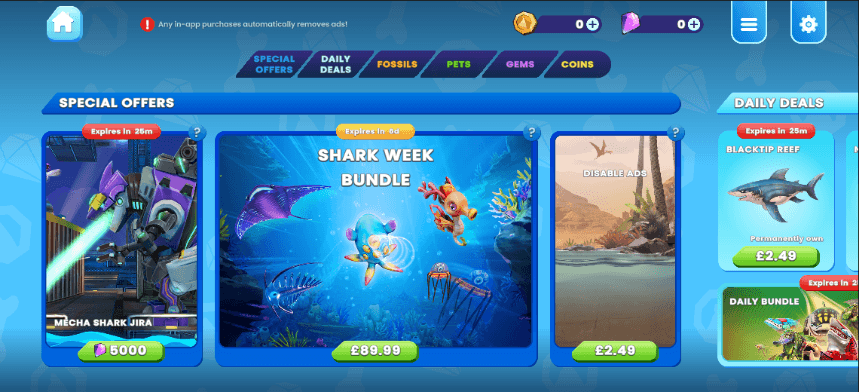
Shop final design - Production phase
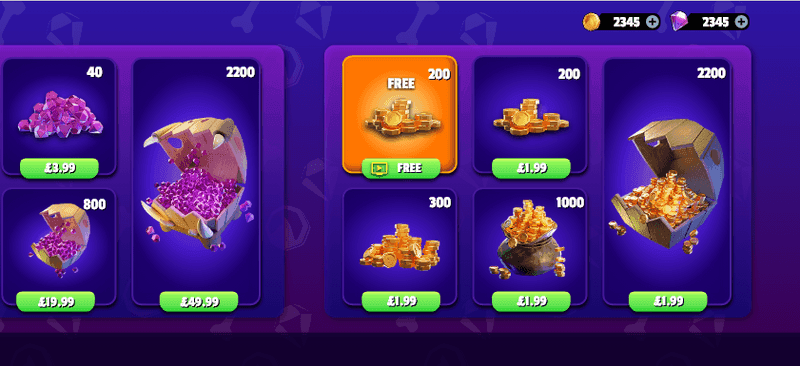
Shop final polished design - Launch ready
Design Outcome
Key Features
Instant Navigation
Horizontal scrolling with snap navigation for instant category access
Modular Architecture
Block system enabling non-technical teams to manage live content
Contextual Promotions
Leveraging player segmentation for personalized offers
Impact
Extensive user testing revealed no usability red flags, with players specifically praising the large graphics and banners for special offers. The system unified complex game mechanics with monetization through clear value propositions and live ops compatibility—establishing a sophisticated hub that enhanced both player engagement and business metrics.
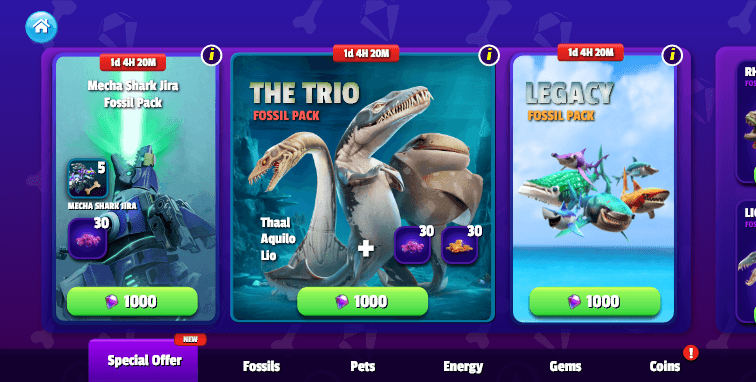
Final design outcome showcasing the complete shop system
Business Impact
User Testing
No usability issues found in extensive testing
Player Feedback
Players praised the visual design and clarity
Live Ops Efficiency
Content updates by non-technical teams
Content Updates
Live ops teams can manage independently
